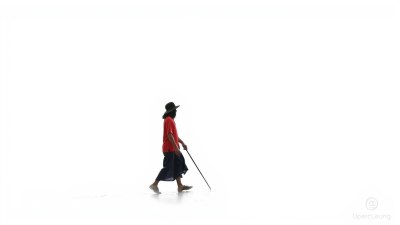What Long Days Teach Us About Presence and Patience
Explore how long days cultivate presence and patience, transforming our approach to time and personal growth.

Image created with Flux Schnell
In our fast-paced modern world, the idea of a long day often carries negative connotations—exhaustion, stress, and the yearning for rest. Yet, beneath the surface of these extended hours lies a profound opportunity to cultivate presence and patience, two qualities that are increasingly rare in today’s instant gratification culture. Long days, when approached mindfully, can teach us how to slow down, immerse ourselves in the moment, and develop a deeper understanding of time and ourselves.
Historically, long days were a natural part of many cultures’ rhythms. Farmers would rise before dawn and work until dusk, teachers would spend extensive hours with students, and artisans would dedicate countless moments to perfect their craft. These long days demanded a particular endurance—a psychological and emotional stamina—that extends beyond mere physical persistence. It was not just about completing tasks; it was about living fully in the passage of time and embracing the lessons inherent in such expanses.
Modern life, with its emphasis on speed and efficiency, often dismisses these lessons. We tend to see long days as burdens to be hurried through or avoided altogether, filling every minute with distractions to make time pass more quickly. This mindset limits our ability to be truly present and patient. Instead of fostering growth, it generates stress and dissatisfaction. Reconsidering the value of long days allows us to reap the benefits of presence - mindful awareness of the now—and patience—the endurance of waiting without frustration.
The Nature of Presence in Extended Timeframes
Presence is often described as the state of fully engaging with the here and now. It requires focusing attention, quieting the mind, and resisting the pull of distractions. Long days provide fertile ground to practice this skill more intensely because the duration itself challenges our typical attention spans. When the hours stretch before us with no immediate deadline, it forces a shift from frantic doing to conscious being.
Consider a day spent on a physical or creative project without predefined time constraints. The extended period invites a rhythm rather than a race, encouraging cycles of focus and rest. In this context, presence is not just about intensity but balance - as we negotiate moments of high concentration with those of reflection and recovery. Such ebb and flow deepen our experience and enhance our capacity to stay grounded in the present.
The practice of presence during long days often aligns with mindfulness traditions, which advocate nonjudgmental observation of thoughts and sensations. Through sustained engagement without immediate results, we learn to detach from outcomes and connect with process. This shift reshapes our relationship with time from one of impatience and urgency to one of curiosity and openness.
Patience as an Active Virtue
Patience is frequently misunderstood as passive waiting. However, patience during long days involves an active engagement—a deliberate endurance that requires mental effort and emotional regulation. When tasks span many hours, impatience can quickly erode motivation and overwhelm our capacity to persist.
Long days reveal that patience is not about longing for the endpoint but cultivating resilience within the process. It is the inner fortitude to remain steady despite uncertain or slow progress. For example, artists laboring over intricate works or researchers conducting lengthy experiments must exercise patience to allow complexity to unfold naturally. Such patience involves acknowledging frustration while choosing to persevere.
Patience also fosters deeper learning because it creates space for gradual insights to emerge. When rushed, we may overlook subtle details or fail to integrate lessons fully. Extended time demands that we accept incremental progress as meaningful, redefining success in terms of incremental growth rather than immediate accomplishment.
Long Days and the Rhythm of Life
Long days naturally encourage reflection on life’s rhythms. They bring awareness of biological cycles such as energy fluctuations and the balance between activity and rest. Respecting these rhythms by pacing ourselves prevents burnout and promotes sustainable productivity.
In embracing the time’s fullness, we align with the natural cadence that governs human wellness. Long days can remind us how sleep, nourishment, exercise, and mental breaks interplay to maintain equilibrium. When we recognize this, we see patience not as a constraint but as a form of self-care, an essential aspect of relating harmoniously with our own limits.
Moreover, living through lengthy spans cultivates humility. The experience shows us the impermanence of discomfort and the inevitability of change. The day’s progression from sunrise to sunset mirrors broader life cycles - beginnings, middles, and endings - that teach acceptance and attunement to temporal flow.
Practical Strategies to Cultivate Presence and Patience
Incorporating the lessons of long days requires intentional practice.
First, mindful scheduling of tasks with realistic expectation reduces pressure and frees attention for the moment.
Second, setting periodic pauses enhances awareness of bodily and mental states, facilitating a reset.
Third, embracing imperfection acknowledges the natural limits of what can be accomplished within a day, easing frustration.
Fourth, deep breathing or meditation practices during longer stretches increase mental clarity and calm.
Finally, journaling experiences during or after long days builds insight about one’s reactions and growth.
Experimentation with these approaches reveals individual preferences and rhythms, helping one to create a balanced relationship with time. Over time, these habits reinforce presence and patience, making them accessible even outside traditionally long days.
The Transformative Power of Long Days
Endurance through long days extends beyond productivity. It reconnects us with a more elemental experience of time and self-awareness. The lessons learned translate into everyday resilience, reducing stress and enhancing emotional regulation.
Additionally, these experiences deepen our appreciation for life’s slow moments—watching a sunset, engaging in conversation without hurry, or savoring a meal. Through the discipline developed in longer stretches, we cultivate gratitude for seemingly mundane intervals that might otherwise be overlooked.
As a result, long days can transform our perception of time from an adversary to an ally. They help us realize that time’s richness is not measured by speed but depth and quality of attention. Presence and patience become lifelines, connecting us to ourselves and the world in meaningful ways.
Challenges in Modern Contexts
Despite their value, long days are increasingly uncommon in some cultures due to technological and societal changes. Constant connectivity and multitasking fragment our attention, leading to shorter bursts of engagement. Consequently, genuine presence suffers, and impatience soars.
Moreover, the pressure to remain productive within limited time frames can fuel burnout, counteracting the benefits long days offer. The antidote involves societal and personal commitments to redefine success beyond speed and volume, embracing depth and quality of experience.
Workplaces, educational institutions, and families can foster environments where long, focused periods are valued and supported. Flexibility in scheduling, recognition of natural productivity rhythms, and encouragement of mindful breaks contribute to this ethos.
Stories That Illustrate Presence and Patience
Throughout history, many individuals have exemplified these qualities during long days. Consider the story of Thomas Edison, whose relentless experimentation often involved entire days and nights spent focused on invention. His ability to remain patient with failures and present in the ongoing process was crucial to his breakthroughs.
Similarly, indigenous cultures often emphasize the importance of time spent in nature, moving slowly through landscapes, observing, and participating in cycles that unfold over extended periods. These practices cultivate an innate presence and a patience grounded in respect for natural laws.
Everyday narratives - from parents tending to children during long, demanding days to athletes training for competitions—also illustrate how enduring attention and calm perseverance lead to ultimate success and growth.
Reframing Our Relationship with Time
Reimagining long days as opportunities opens a new paradigm for engaging with time. Instead of rushing to tick off tasks or yearning for speed, we can invite spaciousness into our schedules. This space nurtures presence and patience as pathways to richer, more meaningful living.
Embracing this reframing begins with awareness. Noticing how we respond to extended time frames—whether with resistance or openness—guides deliberate change in attitude. By consciously choosing curiosity over anxiety and steadiness over haste, we gradually transform our experience.
The process is iterative, requiring perseverance and self-compassion. Each long day becomes a practice session in presence and patience, training us to meet life’s demands with grace.
The Ripple Effects of Presence and Patience
Developing presence and patience impacts our relationships profoundly. When we stay present, our listening improves; when we are patient, our responses become more thoughtful. This quality enhances empathy and reduces conflicts.
In professional contexts, these traits improve decision-making, creativity, and collaboration. They contribute to leadership that values sustainable growth and employee wellbeing. Communities that embrace these values foster cohesion and resilience.
The influence extends even further - environmentally, a patient and present mindset encourages sustainability and stewardship, counteracting impulsive consumption and neglect.
Integrating Long Day Insights into Daily Life
While not everyone experiences characteristically long days, the principles gained from them are widely applicable. We can simulate long day conditions by dedicating focused blocks of time to specific activities, free from distractions and interruptions.
Practicing presence might include single-tasking, deep work sessions, or intentional pauses. Cultivating patience could involve setting realistic expectations, practicing delayed gratification, and recognizing growth as nonlinear.
Intentional reflection on these practices, through journaling or dialogue, consolidates the learning. This continual engagement shifts presence and patience from skills to dispositions embedded in daily living.
Embracing the Balance of Effort and Surrender
Long days teach us an essential paradox: effective presence and patience require both effort and surrender. Effort is needed to maintain focus and temper frustration. Surrender involves releasing attachment to outcomes and embracing uncertainty.
This balance is delicate; too much effort leads to exhaustion, too much surrender to passivity. Finding the middle path is a process refined through experience. Long days offer a canvas for exploring this dynamic, enhancing emotional intelligence and adaptability.
Recognizing when to push forward and when to rest nurtures wisdom applicable beyond individual days to entire life journeys. This wisdom anchors us amidst challenges, providing steadiness and grace.
Transcending Time Constraints
Ultimately, long days provide more than just additional hours; they offer a transformative space where presence and patience flourish. These qualities enrich our engagement with both time and life, allowing us to navigate complexity and change with greater serenity.
In embracing long days - whether literal or metaphorical - we cultivate an enduring relationship with time that respects its depth rather than its briefness. This relationship unlocks a fuller experience of existence, marked by attentiveness, resilience, and a profound sense of belonging.











